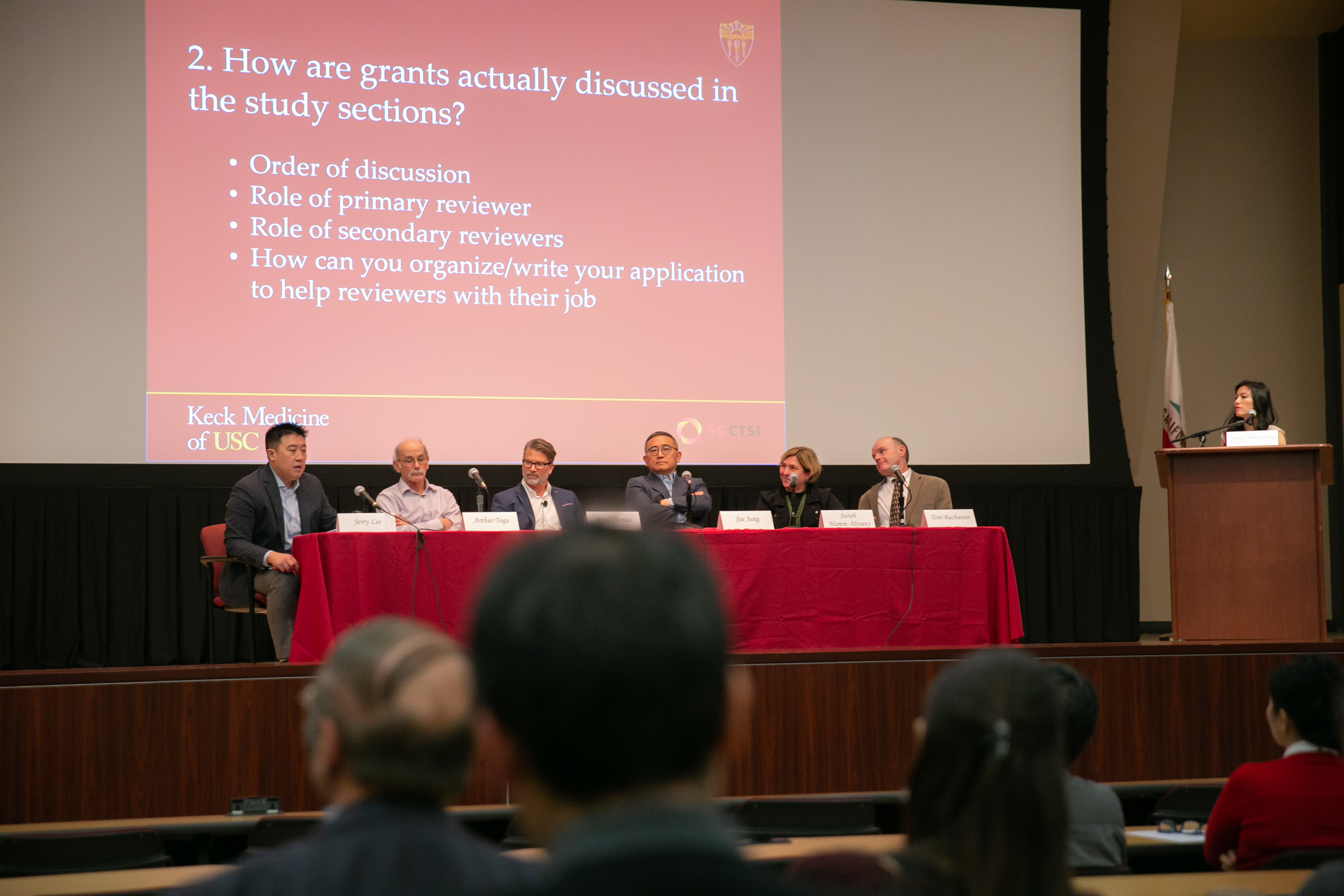Writing Successful NIH Grant Applications: Advice from the Insiders
A seminar co-sponsored by the SC CTSI and Keck School of Medicine showed researchers how to think like a reviewer and write better proposals.
Careers in biomedical research depend in large part on an investigator's ability to obtain NIH funding—and that comes down to writing great grant applications, according to a panel of veteran principal investigators and others with inside experience as NIH reviewers.

The panelists shared hard-won insights into the NIH grant review process at a recent seminar at Keck School of Medicine, entitled, "Inside NIH Study Sections and Common Mistakes on NIH Applications: Advice from the Battleground." The event, co-sponsored by the Keck School of Medicine Deans’ Office and the Southern California Clinical and Translational Science Institute, was designed to help early-career researchers deepen their understanding of the NIH funding process and increase their chances for success.
NIH grant applications are famously complex. In order to produce a successful application, investigators must pay attention to formatting details and tailor their application to meet evolving programmatic requirements. Panelists offered advice to avoid common but serious mistakes that can sink an otherwise promising application, as well as tips on writing, outreach to program officers, and much more.
Speakers and panelists at the event were Arthur Toga, PhD; Jae Jung, PhD; Paul Thomas, PhD; Thomas Buchanan, MD; and Sarah Hamm-Alvarez, PhD. April Armstrong, MD, MPH, moderated the event. Also presenting was Jerry SH Lee, PhD, who recently joined the USC faculty after serving more than a decade as Health Science Director in the Office of the Director at the National Cancer Institute—the largest of the institutes in terms of dollars and funding awards.
Craft a compelling scientific story
Proposing solid research questions and strong study designs are essential, but may not be enough, noted the panelists. To stand out from the pack, grant seekers must also excite NIH study section reviewers by crafting a scientifically compelling narrative that conveys the broader impact of the work proposed.
"I think a grant has to tell a story," said Buchanan. "It should end by saying if you accomplish this, here's what it will mean to the field—a new biomarker, or target for development. Because, more and more, translational potential is important to the NIH."
Strong visual presentation of the application that makes effective use of graphics, pictures, bullet points and other design elements to convey your message with clarity and power also helps applications stand out. Reviewers have up to a dozen proposals to read, noted the presenters, and many are wordy, dense, and hard to get through.
"Make it so that it's a pleasure to read, produce it with quality," Toga said. "Make it bold and make it beautiful. There's no excuse not to do that."
NIH reviewers also look for various indications that a thoughtful scientist is behind the application, such as the investigator's anticipation of and response to potential challenges that might arise during a study. In addition, the investigator must keep up to date on changing NIH requirements, such as equal use of genders in mouse experiments.
The panelists offered many other tips to ensure that grantseekers' chances aren't diminished or eliminated through technical errors or omissions. But they all came back to one key piece of advice: don't look at grant writing as a chore, but as an opportunity to explain your research interests to people who aren't as familiar with the subject as you are.
"This is your chance to write about something you're passionate about and to convince others that this is worth funding," said Thomas.
More than 200 faculty and students attended the seminar, which was held December 18, 2018. To view the seminar in its entirety, watch a video of the event.
To learn about upcoming seminars and other events, check the Events & Deadlines page of the SC CTSI.



